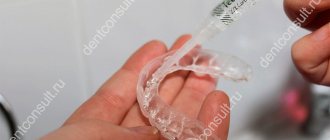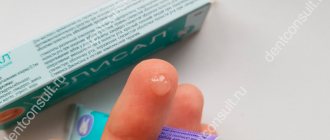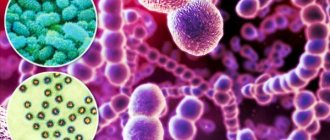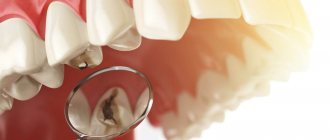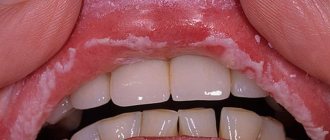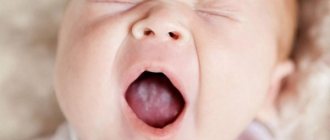What is regurgitation?
Regurgitation in infants is considered to be the spontaneous release of a small amount of just eaten food (milk or formula) into the baby’s mouth from the stomach.
Content:
1. Types of regurgitation |
00:56 (in video) 2. Physiological causes of regurgitation | 01:40 (in video) 3. Functional causes of regurgitation | 02:43 (in video) 4. Permissible frequency of regurgitation 05:13 (in video) 5. Until what age can regurgitation continue | 05:47 (in video) 6. Is it necessary to feed the baby after spitting up | 06:23 (in video) 7. Actions when spitting up | 07:11 (in video) 8. Congenital pathologies of the gastrointestinal tract, as a cause of regurgitation 9. Actions to prevent regurgitation Online consultation with a pediatrician (Breastfeeding Specialist)
Online consultation
During the consultation, you will be able to voice your problem, the doctor will clarify the situation, interpret the tests, answer your questions and give the necessary recommendations.
Types of regurgitation in newborns
There are 3 types of regurgitation:
- belching - the release of air captured by the baby when eating, as a rule, a small volume of milk or formula comes out;
- regurgitation - the food received and the air along with it come out very abundantly. In time, this occurs simultaneously with the end of the meal or after a short period of time. Children in the first 5 months of life are more often susceptible to this phenomenon. Does not cause anxiety or crying in the child, appetite does not disappear;
- vomiting is similar to regurgitation, but there are a number of features. The child is capricious, cries, becomes sleepy, lethargic. There is a complete loss of appetite and reluctance to eat.
3 month old baby drooling
drooling at 3 months
In the section Raising children to the question The child is 3 months old, drooling and sucking his fist asked by the author SG, the best answer is that we are still drooling like a stream))) and they also began to drool early, somewhere around three months, and the first tooth appeared at only five and a half I don’t allow my hand to be chewed, I exchange it for a toy, but we didn’t take a pacifier, and even now I can only stick it on the street so that I don’t swallow cold air
Hello! Here is a selection of topics with answers to your question: The baby is 3 months old, drooling and sucking his fist
Reply from ***SKARLETT*** Even if nothing is too early. it's like that for everyone
Answer from Araucaria-2 I was constantly drooling; my first tooth appeared only at 5 months. The pacifier is worth trying; of course, it’s not a fact that he will want it. And my friend’s baby had her first one when she was almost a year old, and she was also drooling constantly. So they climb there, teeth, but to
Answer from Nadezhda Kiyanitsina, give me a better domestic rubber toy.
The answer from Zhanna Kuznetsova scratches her gums and is quick. Good development!
Answer from Lyubov Vasina You buy him a special silicone ring at the pharmacy, kids love to suck on it and rub their gums.
Answer from Elena Give him something to scratch his gums, he will like it.
Answer from Katyushka Kukharenko This happens to almost all children at this age. It’s unlikely that it’s related to teeth, we are predicted to have teeth from the age of 4 months - in the end, none. and we are 9 months old! img src= //otvet.imgsmail.ru/download/530e56afd283395268f5c36a12676039_61964_1999166.png gt;. /a
Answer from Pupsik why is it early, it’s already possible, but the fist still tastes better
Answer from Yatyan: Well, they still suck their fists in utero. And what about your teeth? Mine already had 2 teeth at 3 months.
Answer from Oksana)) No, this is not for teething. Buy a soft rubber toy and let him chew. We are already 5 months old. and there is still no tooth, but the fist is pulled into the mouth.
Answer from Maria Zyablikova This is before the teeth.
Answer from Elena Khaidukova Children are sometimes born with teeth, so it’s time to get ready, soon they will have a bite.
Answer from Nikolay Kolomytsev, maybe he’s just hungry and wants to eat, and you’re all toys and toys))))))))))) hunger is not a toy, so you can eat your fist)))
Answer from Lenka-foam I have been putting my hands in my mouth since about 2.5 months, and from 3 months I have been drooling. This is not a matter of teeth, this is a period. I give her teethers, but not because of the teeth, but because she needs to put everything in her mouth
Reply from I love you!))) We have been drooling since we were 3 months old too! Now 5, no teeth! chews everything, a pacifier and a fist, and whatever comes to hand!))))
Answer from Yovetlan give anything (a pacifier, a toy, a raw carrot - he won’t bite it, but scratch his gum))). but don’t let him suck your fist or finger—then you’ll have to wean yourself off.
Answer from Olga Vinnikova We are also 3 months old, drooling, sucking her fist, biting her breast very painfully, crying until she lets her bite her finger!
Answer from OKSANA, when I was 3 months old, 2 teeth erupted, I buy Babydent drops, they help us, don’t buy only teethers with liquid, we bought an ordinary Russian one, like a tree, there are also fish, they are soft and can be held well by the handle
Hello! Here are more topics with the answers you need:
Physiological causes of regurgitation
- short esophagus or ball-shaped esophagus;
- the esophagus becomes wider in the upper part (has the shape of a funnel);
- the esophagus is narrowed (this process is normal, according to physiology);
- The gastric sphincter is underdeveloped. This is a temporary phenomenon (due to age).
The muscular corset of the stomach is still weak, and the mucous membranes are quite sensitive. That is why, when food enters the stomach, its bottom begins to produce contractile movements. As the pressure level increases, food makes its way back into the oral cavity from the esophagus.
Functional causes of regurgitation
Due to the physiological immaturity of the sphincter located between the stomach and esophagus. After food products pass through it, it may not close. Food can easily pass through the esophagus into the oral cavity. In children of the first year of life, this sphincter is poorly developed and may not work well.
- the structure of the gastrointestinal tract (a child’s esophagus differs from the structure of an adult). When the baby lies down, it is easier for food to move back into the esophagus and ultimately into the oral cavity.
- active movements after eating (turns, games).
- overeating (applies to all types of feeding).
- food is not according to the regime. This applies to "artificial babies" who are often fed as if they were breastfed, i.e. on demand. The mixture takes much longer to digest. Eating food not according to a schedule, regime, but at will, on demand, creates excess pressure on the bottom of the stomach, preventing food from being digested normally, so regurgitation may occur.
- the mixture is chosen incorrectly;
- swallowing air during feeding (baby sucks quickly);
- incorrectly attached to the breast, the bottle is positioned incorrectly, read more about breastfeeding positions here;
- with a sudden change of position after eating (swaddling, massage, games).
- due to the resulting pressure on the abdominal cavity - a narrow diaper, a tight diaper, colic, gas, constipation.
- congenital defects of the gastrointestinal tract, diseases associated with neurology, intestinal obstruction.
- poisoning
- diseases and injuries: hyperthermia, head injury, acute respiratory viral infection, pylorospasm, pyloric stenosis
- Pylorospasm and pyloric stenosis.
What is pylorospasm? The pyloric section of the stomach is the section where the stomach passes into the duodenum. Muscle spasm in this area is called pylorospasm. In such a situation, food does not pass into the stomach or passes through with difficulty, which causes regurgitation.What is pyloric stenosis? This is a phenomenon where food does not pass or passes with difficulty from the stomach to the intestinal area. This condition requires surgical treatment.
Symptoms of food allergies in infants
1. Manifestations of food allergies are varied. The most common manifestation is a rash. Immediately after an allergen enters the body, an acute allergic reaction—urticaria—may develop. Bright red swollen spots of different sizes and shapes appear on the baby’s skin. A bubble with transparent contents may appear in the center of the spot. Its size can vary from a few millimeters to several centimeters. This rash usually goes away within 1-3 days. But it’s still worth showing the baby to the doctor. Since sometimes a child needs medication, and in case of an extensive rash, or its unfortunate location, even emergency help. You need to remember which product caused this reaction and not give it again.
2. Other types of rash are not as severe. Therefore, it is not always possible to determine a clear connection between its occurrence and the product. Such rashes are usually not bright, small-pointed. They are prone to undulating flow. The rash usually becomes brighter in the evening and fades in the morning. The skin becomes dry, flaky, and sometimes cracks. Most often, such a rash is located on the cheeks, buttocks, outer surfaces of the thighs and forearms. This type of rash requires special attention from specialists - examination and specific treatment.
3 The second most common manifestations are gastrointestinal symptoms. These include: swelling of the mucous membranes of the oral cavity, swelling of the esophagus, single or repeated vomiting. Most often, such symptoms appear acutely, immediately after consuming the allergen. In addition, the baby may experience abdominal pain. He can groan, be capricious, and kick his legs. Food allergies can manifest as loose stools. This can be either diarrhea or constipation. Less obvious signs of a food allergy in a baby may include frequent heavy regurgitation, low weight gain, poor appetite, and weakness. Manifestations from the gastrointestinal tract may occur with or without a rash.
4 Much less often in infancy, manifestations from the respiratory system are possible; if food gets into the mucous membranes, swelling of the upper respiratory tract may occur. This condition is acute and life-threatening. It requires immediate medical attention. With prolonged contact with the allergen, allergic rhinitis or asthma may develop. More often, such reactions appear not after ingestion of food, but after inhalation of its particles. The most common cause of respiratory allergies is inhalation of fumes from cooking or frying fish.
In addition, there are severe acute allergic reactions such as angioedema or anaphylactic shock. Such reactions occur immediately after contact with the allergen and develop very quickly. They are extremely rare and require emergency medical attention.
Acceptable frequency of regurgitation.
As a rule, they indicate a frequency of 6-8 times a day in small portions; you can also find data on regurgitation 2-5 times a day and a volume of ⅔ tablespoons. If the number of regurgitations increases, fever, and vomiting appear, contact your pediatrician. If weakness is added, this is a reason to call an ambulance.
Especially close attention is required when spitting up like a fountain. You need to offer the child water and carry it in a column. If the regurgitation was a one-time occurrence, there is no need to worry.
Allergic reaction and increased salivation
Saliva released in large quantities may be a symptom of an allergy. The activity of the salivary glands increases when pollen, dust, fumes from detergents and other allergens enter the baby’s body.
In addition to this symptom, the child may suffer from nasal congestion or runny nose (he has runny, clear snot). Tearing and redness of the eyes are common. The baby may sneeze and cough. In this case, it is necessary to contact a specialist as soon as possible to identify and eliminate the allergen. Lack of timely assistance can lead to the development of chronic diseases.
Do I need to feed my baby after spitting up?
- If the baby has eaten a long time ago, the milk/formula has almost been digested; if the body position changes, the baby may still burp. This is not a reason for additional feeding.
- If regurgitation occurs after feeding, this is a sign of overeating. It’s also not worth feeding.
- If the baby spits up profusely, this is a reason to discuss this issue with the pediatrician. We also don’t supplement feeding.
- If regurgitation is minimal, then you can feed as usual.
Taking into account the physiology of children, it is not possible to find a clear connection between feedings and regurgitation.
Increased drooling after 2 years
If excessive drooling in a child under 2 years of age is considered normal, then older children require the help of a specialist who will tell you whether this phenomenon is temporary or requires drug treatment. Usually in such cases, children are prescribed drugs with anticholinergic effects (“Atropine”, “Spazmolitin”, etc.).
And don’t be scared when you see your baby drooling profusely. Usually this is simply a physiological feature that absolutely all children encounter at a certain age. Very little time will pass, the baby will start teething, he will learn to swallow saliva and the situation will return to normal. Mom can only wait out this moment, helping her baby cope with profuse drooling.
- Jumpers for children
- How to feed a child correctly?
- The child sweats in his sleep
Actions to take when spitting up
Sometimes spitting up is easier to prevent than to treat. This does not always apply to cases where regurgitation is not physiological in nature and requires specialist supervision and possible surgical intervention.
So, simple tips to help minimize regurgitation:
- The first time the baby is put to the breast. Try to master this skill while still in the maternity hospital, turning to medical staff for help. You can also seek advice from a breastfeeding specialist. A baby who is properly attached to the breast will swallow less air during feeding, which will reduce the risk of regurgitation and stomach problems in the form of excessive gas formation.
- Get your baby used to lying on his tummy on a hard surface before feeding. This is a kind of massage that also has a beneficial effect on the baby’s stomach, reducing regurgitation and preventing colic and bloating.
- Before feeding, you can do a light massage of the abdomen in a clockwise direction, and light exercises.
- Try not to make your baby scream from hunger, as he will definitely swallow excess air, which will become a likely cause of regurgitation and just a bad mood. If this happens, try to calm the baby down first, and then start feeding.
- If feeding formula from a bottle, make sure it is full. The nipple of the bottle should be filled with milk, not air. Particular attention should be paid to the nipple, namely the hole in the nipple. It must be selected according to the age of the child. The inscription on the box of the bottle will help with this, indicating what age the nipple is designed for. The hole in the nipple regulates the flow of fluid and avoids choking during feeding.
- If during the feeding process the baby stops or begins to arch and cry, you can stop feeding and help the baby burp out excess air. To do this, take him in your arms, position him facing you so that the baby's arms and his head are on your shoulder. The baby will burp and perhaps return to eating again.
- Don't overfeed your baby. It is worth increasing the number of feedings, but reducing the portion. When bottle-feeding, the doctor will calculate the rate of food intake at a time and the total amount per day, based on the age and weight of the baby.
Many pediatricians, gastroenterologists, and surgeons take into account the recommendations of the working group of the European Society of Gastroenterology and Nutrition:
- position treatment
- use of therapeutic nutrition
- medication use
- surgery
- Treatment by position. During feeding, it is important to ensure that the baby is in a position in which the head and upper body are raised above the rest of the body. For this purpose, you can use a pillow or diaper. After feeding, hold the baby in a column to allow excess air to escape. Do not swaddle your baby tightly so as not to squeeze the stomach. After feeding, it is recommended to place the baby on his stomach or right side. But WHO recommends putting your baby to sleep only on his back.
- Medical nutrition. This means more frequent feedings with smaller portions. For children who are bottle-fed, the doctor may recommend the use of a therapeutic antirefluxor formula (AR is its designation on the package). These mixtures have an increased proportion of casein relative to whey proteins, so they are thicker, which prevents their release through the esophagus. Also, these types of foods are often enriched with thickeners, for example, starch or gum - a substance that, under the influence of the acid of the stomach contents, becomes thicker. This substance has the peculiarity of not being dissolved by enzymes, which allows it to remain thick in the stomach longer. It also promotes the active movement of food into the intestines from the stomach.
For more information about artificial feeding, read our article “Artificial feeding: feeding rules and types of formulas.”If the child is breastfed, then, on the recommendation of a doctor, the mixture can be added to the diet and enter the child’s body before milk. The duration of use of this mixture is about 3 months.
- Drug treatment. It is prescribed by a doctor, if the previously indicated methods have not brought results, then it is possible to treat with medications that can significantly improve the contraction of the intestinal walls.
- Surgical intervention. This is an extreme measure when the main cause of regurgitation is pathology.
Now more specifically about each:
Helping your baby with excessive salivation
A continuous stream of drool in an infant causes discomfort to both the baby and the parents. The result of excessive drooling can be not only constantly wet clothes and a bad mood, but also irritation in the chin and chest area. A rash like this, which appears as a result of endlessly flowing drool, causes far from pleasant sensations and additional inconvenience. Plus, a large volume of saliva secreted can provoke a cough in the baby.
Using teethers and special gels for gums will relieve itching in the mouth and soothe the baby.
It is possible to minimize all the ensuing consequences through proper care, which includes:
Using bibs. They have been used for a very long time and, due to the presence of a liner made of waterproof materials, they perfectly protect the baby’s chest from constant exposure to moisture. It wouldn’t hurt to include them in the list of things that need to be purchased before the baby is born. Buying a pacifier. In the modern world, many mothers are trying to give up pacifiers. However, it can be very useful, because it makes it much easier for the baby to swallow drool. Purchasing teethers. Such inventions are aimed at reducing itching of the gums. At the same time, they perfectly absorb excess drool.
It is important to regularly put them in the wash and rinse them thoroughly. Using creams containing vitamins A and E. Lubricating irritated areas with them will reduce discomfort. Placing baby on tummy
Since newborn babies lie on their backs almost all the time, drool accumulates, as it is difficult for it to flow out of the mouth. Placing the baby on your stomach is an excellent solution to this problem. Use of cooling and anesthetic gels. They will relieve itching in the gums, which in turn will lead to a decrease in irritation, and, consequently, a decrease in saliva production.
Despite all the inconveniences associated with excessive salivation, in most cases it is completely normal. All children go through this and parents just need to be patient and, if possible, alleviate the condition of the baby.
If you are still concerned about your baby's continuous drooling, which is accompanied by other unpleasant symptoms, consult your pediatrician
Congenital pathologies of the gastrointestinal tract as a cause of regurgitation
- Hiatal hernia. This is a congenital defect expressed in the underdevelopment of the structures of the diaphragm. Regurgitation begins within a couple of weeks after birth, lasts a long time, occurs immediately after feeding, the baby stops gaining weight or even loses weight. To identify this diagnosis, an x-ray examination is performed.
- Relaxation of the cardia (or chalasia of the sphincter that separates the esophagus and stomach). If it is not completely closed, then milk is released unchanged from the stomach into the esophagus. This type of regurgitation appears in the first days after birth and can be severe, especially if the baby has not burped up air. The child is lethargic, sucks poorly, sleep is disturbed, and there is no weight gain. X-ray examination can confirm the diagnosis.
- short esophagus (congenital anomaly) - the stomach is located above the diaphragm due to the fact that the esophagus does not correspond to the size of the chest.
If a mother is alarmed by the baby’s regurgitation and at least one of these signs is present, this is a reason to consult a doctor immediately.
- the child spits up often and a lot;
- bile and blood are present;
- regurgitation began after six months or did not go away by this time;
- poor weight gain, lethargy, rare urination.
- restless behavior
- increase in body temperature,
- skin rashes.
The formation of a mechanism that prevents regurgitation begins in the last 3 months of the mother’s pregnancy and continues after the birth of the baby.
Reflux is a mechanism of regurgitation, antireflux is the opposite phenomenon.
The antireflux mechanism is a complex system that can be damaged by various factors. Often this damage is observed in premature babies or children with developmental delays, as well as during difficult pregnancy, cesarean section, difficult childbirth, hypoxia and increased intracranial pressure.
If these factors are present, in addition to regurgitation, the baby will have signs of a nervous system disorder: mild excitability or vice versa, the child will be very lethargic, sleep will be disturbed, there will be tremor of the arms and legs, the presence of hypertonicity and hypotonicity.
As a rule, to determine the cause of regurgitation and prescribe appropriate treatment, ultrasound, x-rays, and computed tomography of the abdominal cavity are used.
Preserving the health of the child is the main task of parents. If your baby’s behavior, sleep, or health have worsened and you are concerned, consult a doctor. Consulting a specialist will never be superfluous. There are a lot of reasons for regurgitation, as a rule, they are all due to physiology, but only mom and dad are able to notice in time that something is going wrong and correct the situation in time without harm to the health of the little person.
Normalization of nasal breathing function in infants. New approaches
Impaired breathing through the nose can cause a number of disorders in children in the first months of life. In infants, the act of sucking and swallowing is disrupted, the baby begins to worry, refuses to eat, and sometimes gains weight more slowly. Lack of nasal breathing can even lead to increased intracranial pressure and dysfunction of the central nervous system. At the same time, the child becomes restless. Some children have sleep disturbances. Severe and prolonged difficulty in nasal breathing leads to hypoxia, which slows down development. Children with impaired nasal breathing begin to breathe through their mouths, and cold air entering the respiratory tract easily leads to colds; such children get sick more often.
Thus, the state of breathing through the nose should be monitored starting from the birth of the child. It is necessary to care for the baby’s nasal cavity daily - carefully, using special cotton swabs or turundas, remove crusts and thick mucus with rotational movements, after dropping 1-2 drops of sterile petroleum jelly or vegetable oil or isotonic solutions that help thin the mucus and facilitate its removal from the nose, enhancing resistance of the nasal mucosa to pathogenic bacteria and viruses, for example, Otrivin Baby drops for irrigation - a sterile isotonic solution of sodium chloride 0.74%, the pH level of which is close to the natural secretory fluid of the nasal mucosa. Otrivin Baby is used intranasally, a few drops from a dropper bottle 2-4 times in each nasal passage daily.
If a child has a large amount of mucus accumulated in the nose, which happens after heavy regurgitation or with a runny nose, you can use a special mucus pump or a small enema bottle and carefully suck out the contents of the nasal cavity. It seems convenient to use an Otrivin Baby aspirator, specially designed so that air cannot penetrate into the nasal passages and mucus does not get back into the nose. Replaceable disposable aspirator tips will help avoid re-infection. In addition, it is necessary to remember the need for regular examination not only by a pediatrician, but also by a pediatric otolaryngologist. Specifically for children, since the upper respiratory tract of children, as well as the child’s body as a whole, has a number of anatomical and physiological characteristics, and even minor inflammation of the nasal mucosa causes swelling in infants and, as a result, difficulty breathing through the nose.
The nasal cavity (cavum nasii) (Fig. 1) is located between the oral cavity and the anterior cranial fossa, paired maxillary and paired ethmoid bones. The nasal septum divides it sagittally into two halves, opening anteriorly with the nostrils and posteriorly, into the nasopharynx, with the choanae. Both halves of the nasal cavity are surrounded by paranasal sinuses: the maxillary, ethmoidal labyrinth, frontal and sphenoid, each of which communicates with the nasal cavity by an anastomosis. The nasal cavity has four walls: inferior, superior, medial and lateral.
The lower wall (bottom of the nasal cavity) is formed by two palatine processes of the upper jaw and, in a small area posteriorly, by two horizontal plates of the palatine bone (hard palate), connected along the midline by a suture. Congenital violations of this suture lead to various defects (for example, non-fusion of the hard palate). In front and in the middle in the bottom of the nasal cavity there is a nasopalatine canal (canalis incisivus), through which the nerve and artery of the same name pass into the oral cavity, anastomosing in the canal with the great palatine artery. In newborns, the bottom of the nasal cavity comes into contact with the tooth germs, which are located in the body of the upper jaw.
The upper wall (roof) of the nasal cavity in front is formed by the nasal bones, in the middle sections - by the cribriform plate (lamina cribrosa) and cells of the ethmoid bone (the largest part of the roof), the posterior sections are formed by the anterior wall of the sphenoid sinus. The filaments of the olfactory nerve pass through the openings of the cribriform plate. It should be remembered that in a newborn, lamina cribrosa is a fibrous formation that ossifies only by the age of three.
The medial wall, or nasal septum (septum nasi), consists of one anterior cartilaginous and posterior bone sections. The bony section is formed by the perpendicular plate (lamina perpendicularis) of the ethmoid bone and the vomer (vomer), the cartilaginous section is formed by quadrangular cartilage, the upper edge of which forms the anterior part of the dorsum of the nose. In the vestibule of the nose, anteriorly and downward from the anterior edge of the quadrangular cartilage, there is a skin-membranous movable part of the nasal septum (septum mobile) visible from the outside. In a newborn, the perpendicular plate of the ethmoid bone is represented by a membranous formation, the ossification of which ends only by the age of six. In a newborn, the height of the vomer is less than the width of the choana, so it appears as a transverse slit, and only by the age of 14 the height of the vomer becomes greater than the width of the choana, and it takes the form of an oval, elongated upward.
In the formation of the lateral (outer) wall of the nasal cavity, the medial wall and frontal process of the maxilla, the lacrimal and nasal bones, the medial surface of the ethmoid bone, and in the posterior part, forming the edges of the choana, the perpendicular process of the palatine bone and the pterygopalatine processes take part in the anterior and middle parts. sphenoid bone. On the outer (lateral) wall there are three nasal conchae (conchae nasales): lower (concha inferior), middle (concha media) and upper (concha superior). In a newborn, the inferior concha descends to the bottom of the nose, and there is a relative narrowness of all nasal passages.
On the side wall of the lower nasal meatus, at a distance of 1 cm in children and 1.5 cm in adults from the anterior end of the concha, there is an outlet of the nasolacrimal canal. This hole forms after birth; if its opening is delayed, the outflow of tear fluid is disrupted, which leads to cystic expansion of the canal and narrowing of the nasal passages. The posterior ends of the lower conchae come close to the pharyngeal mouths of the auditory (Eustachian) tubes on the lateral walls of the pharynx, as a result of which, with hypertrophy of the conchae, the function of the auditory tubes may be impaired and their disease may develop.
The mucous membrane of the nasal cavity (Fig. 2) covers all its walls in a continuous layer and continues into the paranasal sinuses, pharynx and middle ear. The anterior section of the nasal cavity is distinguished - the vestibule (vestibulum nasi) and the nasal cavity itself (cavum nasi), which in turn is divided into respiratory and olfactory. The respiratory region of the nasal cavity (regio respiratoria) occupies the space from the bottom of the nose upward to the level of the lower edge of the middle concha. In this area, the mucous membrane is covered with multirow columnar ciliated epithelium.
Under the epithelium is the actual tissue of the mucous membrane (tunica propria), consisting of connective tissue collagen and elastic fibers. There are a large number of goblet cells that secrete mucus, and tubular-alveolar branched glands that produce serous or serous-mucosal secretion, which exits through the excretory ducts to the surface of the mucous membrane. Somewhat below these cells on the basement membrane are located basal cells, which are the basis for the regeneration of the epithelium after its physiological and pathological desquamation.
The mucous membrane throughout is tightly fused with the perichondrium or periosteum, which forms a single whole with it. In the area of predominantly the medial and lower parts of the inferior concha, the free edge of the middle concha and their posterior ends, the mucous membrane is thickened due to the presence of cavernous tissue, consisting of dilated venous vessels, the walls of which are richly supplied with smooth muscles and connective tissue fibers.
Atmospheric air passing through the nose is warmed and moistened. In addition, the nose is a kind of filter that purifies the inhaled air. 0.5–1 liter of mucus per day is secreted into the nasal cavity, which moves in the posterior two-thirds of the nasal cavity at a speed of 8–10 mm/min, and in the anterior third at 1–2 mm/min. Every 10 minutes a new layer of mucus passes through, which contains bactericidal substances and secretory IgA.
In the neonatal period, as well as in infants, frequent regurgitation contributes to irritation of the mucous membrane of the nose and nasopharynx with gastric contents and inflammation - rhinitis, which is manifested by prolonged difficulty in nasal breathing. The first 3–5 months of life, which is the period of “physiological humoral immunodeficiency” of a person, pass “under the cover” of passively transmitted maternal antibodies against most respiratory viruses. The only exception is respiratory syncytial infection, in relation to which the intensity of passive immunity is insufficient, especially in premature newborns [1].
In children suffering from rhinitis, before breastfeeding, it is necessary to suck out the mucus from each half of the nose and 5 minutes before feeding, drip vasoconstrictor drops for infants into both sides of the nose [2, 4], for example, Nazivin 0.01%, for children under 1 month - 1 drop 2-3 times a day for 3-5 days, for children from 1 month to 1 year - 1-2 drops 2-3 times a day for 3-5 days; Otrivin “Moisturizing formula” (sorbitol and methylhydroxypropylcellulose included in the drug have a moisturizing effect) drops 0.05%, for children from 1 month to 6 years - 1-2 drops 2-3 times a day in each half of the nose [2 ], can be used for up to 10 days.
In children with a burdened allergic history, suffering from rhinitis, accompanied by nasal congestion, itching, sneezing, rhinorrhea, the use of the combined drug Vibrocil, which has not only a vasoconstrictor and antihistamine, but also an additional moisturizing effect, is justified. The drug does not disrupt the functioning of the ciliated epithelium, does not cause ischemia of the nasopharyngeal mucosa, has a natural pH level, which meets the basic requirements of physiological treatment of the nasal mucosa and allows long-term (up to two weeks) use of the drug. Vibrocil nasal drops are prescribed to children under 1 year of age, 1 drop in each half of the nose 3-4 times a day [2].
In the second and third stages of the disease, 2–3% solutions of Protargol or Collargol (depending on age), which have astringent and disinfectant properties, are used. In childhood, the inflammatory process in the mucous membrane of the nasal cavity more often than in adults spreads to the nasopharynx (adenoiditis), auditory tube (in children it is short and wide), larynx, trachea, bronchi, and lungs.
Inflammatory diseases of the paranasal sinuses are also not uncommon in children under one year of age. At this age, the cells of the ethmoidal labyrinth are already developed, which are present even in premature babies. Purulent ethmoiditis in an infant can occur as a result of infectious diseases of the mother, as well as after acute respiratory viral infection. Ethmoiditis often leads to osteomyelitis of the upper jaw, sepsis, and orbital phlegmon. Swelling of the nasal mucosa leads to impaired drainage of the paranasal sinuses and middle ear, which creates favorable conditions for the activation of opportunistic flora and contributes to the development of bacterial complications. In such cases, it is advisable to prescribe drugs consisting of several components that have an antibacterial and anti-inflammatory effect [2].
A rare pathology of the newborn period, which also leads to impaired nasal breathing, is a cerebral hernia that extends from the cranial cavity into the nasal cavity and nasopharynx. There are cases when a cerebral hernia was mistaken for adenoids or nasal polyps and the patient died when trying to remove them [2]. Adenoid vegetations (enlarged nasopharyngeal tonsil) disrupt normal nasal breathing, and also, being a receptor field, can cause allergization of the body. In addition, adenoids contribute to the formation of malocclusion.
Choanal atresia also leads to disruption and sometimes complete impossibility of nasal breathing. In the case of bilateral complete fusion of the choanae, the diagnosis is established on the first day of the child’s life - the baby is in serious condition, does not breathe through his nose at all, and cannot eat, since asphyxia occurs during feeding. This condition requires urgent surgical intervention. Unilateral atresia is more severe: the child is bothered by difficulty in nasal breathing through one or both halves of the nose, fatigue when feeding, the appearance of nasal discharge, and snoring. Sometimes such children are diagnosed only when they enter school. For diagnosis, probing and contrast radiography are used; such a patient must undergo an endoscopic examination of the nasal cavity and nasopharynx.
Thus, a seemingly banal difficulty in nasal breathing in infants should be the subject of increased attention of parents and patronizing physicians, as well as a reason for contacting otorhinolaryngologists and allergists.
Literature
- Samsygina G. A., Bogomilsky M. R. Respiratory tract infections in young children. M.: Miklos. 268 p.
- Kryukov A.I., Arkhangelskaya I.I. Acute rhinitis in children // Consilium medicum, 2004, vol. 6, no. 3.
- Hochban W., Althoff H., Ziegler A. Nasal decongestion with imidazoline derivatives: acoustic rhinomanometry measurements // Eur. Journal of clinical pharmacology, 1999; 55: 7–12.
- Karpova E. P. Acute rhinitis in children // RMJ, November 3, 2006, volume 14, number 22, pp. 1637–1641.
O. V. Zaitseva , Candidate of Medical Sciences
Federal State Institution NCC of Otorhinolaryngology FMBA of Russia, State Institution MONIKI named after. M. F. Vladimirsky , Moscow
Contact information about the author for correspondence
Actions to prevent regurgitation
- hold in a column after feeding until burping;
- do not place on the stomach after eating;
- if the child is bottle-fed, then after consulting a doctor, you can choose an antirefluxor formula. It will prevent regurgitation due to its thickness;
- We do not play active games after feeding, we do not swaddle. Due to the physiological immaturity of the sphincter located between the stomach and esophagus. After food products pass through it, it may not close. Food can easily pass through the esophagus into the oral cavity. In children of the first year of life, this sphincter is poorly developed and may not work well.
